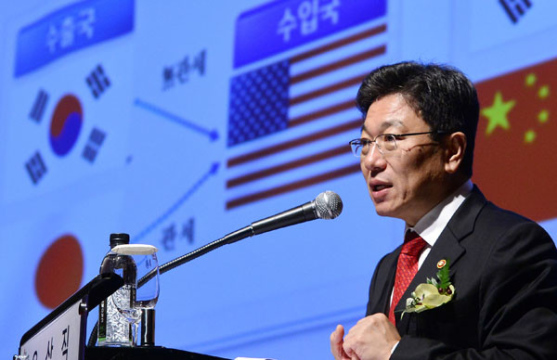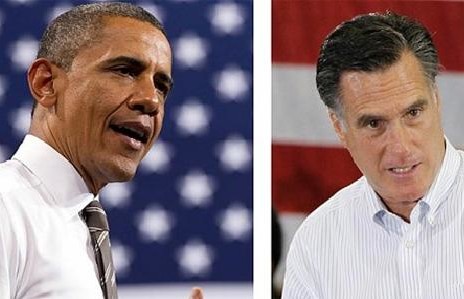
Mexican vs Chinese Factories
With the rising cost of wages in China, manufacturers are increasingly considering Mexico an attractive location to ‘re-shore’ production.
This post is also available in: Spanish
Recently elected Mexican president Enrique Peña Nieto has sent a clear message that he intends to have the state take back control of education policy. The message appears to be directed to Elba Esther Gordillo, the 23-year leader of the teachers’ union (SNTE), which is Latin America’s largest and strongest union, and suggests that his administration will not give in to her, as have others in the past. Whether he will be successful remains to be seen.
The message, sent last week, came in the form of a ministerial designation, an education reform pact, and a proposed constitutional amendment.
First, Peña Nieto elected Emilio Chuayfett, a clear opponent of Elba Esther, as minister of education. Chuayfett has been in politics for 38 years, is a consummate political operator, and a committed public servant. Elba Esther and Chuayfett served in Congress for the PRI party during the same legislature, but did not see eye to eye. Their differences and confrontations later led to the expulsion of Elba Esther not only from Congress, but from the PRI as well, and led her to form her own political party, the Nueva Alianza. Chuayfett’s designation as minister of education should be of concern to Elba Esther.
Second, Peña Nieto presented a Pacto por Mexico(Pact for Mexico), a document that states his administration’s priorities. The pact, signed by the heads of the three biggest political parties, PRI, PAN, and PRD, includes a proposal to reform the education system. The heads of all three parties agreed that the most important reform, and the one Peña Nieto will act on first, is education.
Third, to implement his education proposals Peña Nieto submitted to Congress constitutional amendments that would 1) require teachers, principals, and supervisors to compete for posts and be promoted according to criteria established by a revised Professional Teacher Career law; 2) give the National Education Evaluation Institute full autonomy under the constitution and charge it with carrying out mandatory teacher evaluations; and 3) require that the INEGI, the national household survey institute, conduct a census of teachers, schools, and students.
These three steps may not seem like much, but in Mexico they are radical, and decades late. In many parts of the country it is common practice to buy, sell, or inherit teacher positions, or to have teacher union officials or states award posts as political favors (a 2011 study found that only 7% of teaching posts are awarded by an entry exam; another found that the union awards half the posts). Teacher salaries are not keyed to performance, nor are incentives provided for those who work in remote areas. Teacher performance is also not properly evaluated. The main teacher evaluation and incentive program Carrera Magisterial is poorly designed, giving more weight to seniority, and less to effective teaching. The teachers’ union has for decades vetoed efforts to collect basic information on teachers and their assignments.
SNTE, the national teacher’s union, has immense power over teacher management and education policy. It has veto power over key issues like contracts, training, hiring, incentives, sanctions, and teacher replacement. SNTE is legally entitled to “commission” teachers to take a paid leave of absence from teaching to do union work. Reliable data are scarce, but the few studies available indicate that anywhere from 22,000 to over 45,000 teachers (around 10%) are working as union “commissioners” at any given time, directing huge amounts of money toward promoting union and political interests rather than providing quality education.
Previous presidents and secretaries of education have established pacts, programs, and alliances with SNTE intended to reform the teaching profession, but have all fallen short when faced with the power of Elba Esther. This time may be different. Not only is the government fighting fire with fire by appointing a powerful minister of education, but it has assembled a formidable set of allies that includes the three major political parties, and a large group of education experts, ex-ministers of education, and high-profile civil society leaders.
Despite the positive and optimistic media coverage of the education reform initiative, however, there are skeptics who praise the intention but think a constitutional amendment is not the way to go. Others point out that it is customary to promise the sun, the moon, and stars at the beginning of a presidential term, and are less clear whether Pena Nieto and Chuayfett are willing and able to walk the walk. And there are also those who think that approving the constitutional amendment in Congress and then the senate will be quite a challenge. Given decades of failed attempts to implement a successful educational reform, all are very valid points.
Clearly, good intentions will not be enough, and neither will a constitutional amendment. More changes will be needed to increase the quality of education for all. Goals need to be put in place, money will have to be allocated to back up the initiatives, and the teacher evaluations will need to be technically solid and include more than an exam. The evaluations should also have consequences for those who fail to reach a minimal level of effectiveness. By way of example, Chile, Peru, and Ecuador already have reforms that dismiss teachers who consistently underperform. Respecting and clarifying the role of states and local governments in their education systems will also be needed.
Peña Nieto has a lot to win. If he is can pass the constitutional amendments and put in place other key pieces of the reform, he will have significantly reduced the power of the teachers’ union, and of Elba Esther, over education policy. Most skeptics would then agree that he not only knows how to send a message, but also how to get things done.
For more coverage of the education reform proposal, we recommend following Mexicanos Primero’s daily education news updates here.
Supplementary Coverage:
With the rising cost of wages in China, manufacturers are increasingly considering Mexico an attractive location to ‘re-shore’ production.
South Korea’s entry into the TPP will promote stronger cooperation between South Korea and Latin America.
Education policy — what Romney and Obama agree and disagree on.

